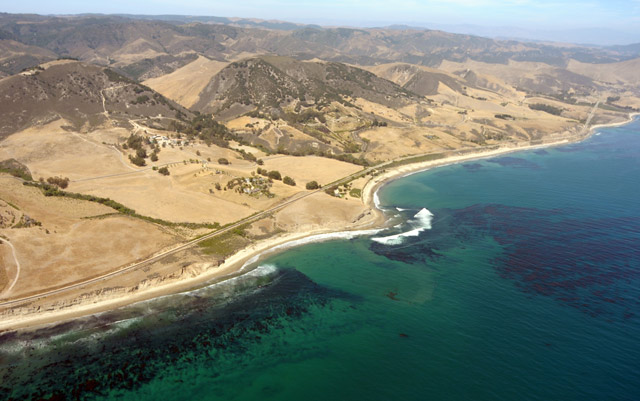Coastal Protection? Nature Does It Best
Natural Ecosystems Can Protect Our Coasts and Cost Less

It is widely acknowledged that nature’s ecosystems provide services beyond measure. Salt marshes, mangrove forests, sloughs, and coastal wetlands — ecosystems anchored between land and sea — similarly afford great benefits. They supply nurseries for fish, habitat for migratory birds, defense against storms, and natural filtration that boosts water quality and recharges aquifers. In their plants, roots, and soils they sequester high amounts of carbon, five times as much as an equivalent area of regular forest.
Coastlines are being developed rapidly and intensively around the world, destroying or at least compromising these ecosystems in the process. With climate change, warming oceans, and intensifying storms (like our recent microburst), these buffers are of growing importance in reducing the impact of storm surges and floods. Studies have established that damage from Hurricane Sandy was reduced by 50 percent along New Jersey’s Atlantic Coast where natural wetlands exist.
Seawalls, bulkheads, and levees have long been the go-to defenses against coastal storms. Fourteen percent of all continental US shoreline has been armored with these “hard” structures — and that percentage is rising. These man-made barriers, however, are prone to failure and are increasingly proving to be inadequate. Instead of damping wave energy, these structures simply deflect it to adjacent areas. Moreover, wave action can erode soil at the base of seawalls, causing them to collapse.
Marshes, estuaries, seagrass beds, coral and oyster reefs, and mangroves can be protected, restored, and even recreated, usually for less cost than building “hard” barriers. Additionally, they enhance coastal habitats and promote biodiversity. Interestingly, these ecosystems grow higher as ocean levels rise and migrate inland along with receding shorelines. Mangrove forests are the workhorses of the seashore world.
A mangrove is a tree or shrub (generally two or more feet in height) that grows in the intertidal zone. It is also the ensemble of such trees and shrubs creating a tidal habitat or forest. It is basically a wetland but with bigger plants. Mangrove plants are specialized to grow with excess salt and saturated airless soils. They can thrive in climate zones from arid to very wet. Contrary to misconception, they are not just tropical but grow along temperate southern and eastern U.S. shorelines and even in places along the California coast.
Although protecting and even recreating these natural infrastructures are high-return investments, less than 3 percent of shoreline storm protection monies are spent on these natural ecosystems. Rebalancing this pattern is crucial. The best approach is to select site-specific natural elements and combine them with man-made green elements — permeable paving, vegetated roofs, and bio-swales. The carbon capture of these natural systems alone would justify their investment costs.
Conserving and strengthening coastal ecosystems can benefit the atmosphere and increase biodiversity, water quality, and storm protection all at the same time.



